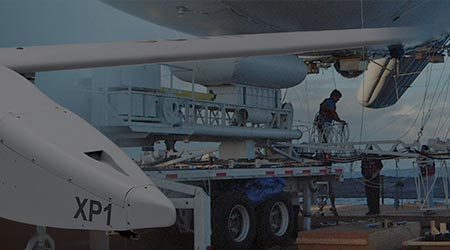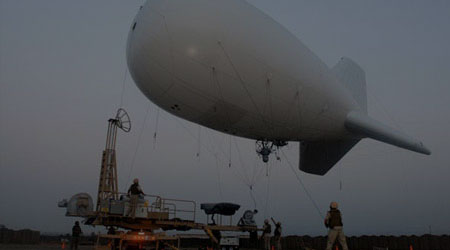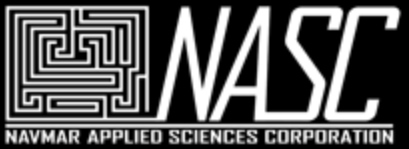
AAS Test Capabilities and Facilities
AAS Test Capabilities and Facilities
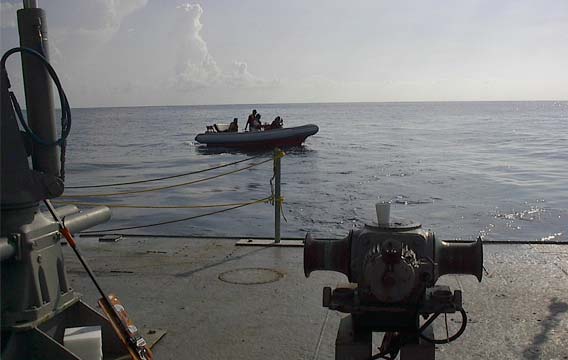
The Advanced Acoustics Sector offers a range of services to the ASW community. We have developed numerous unique testing instruments specifically as acoustic targets for sonobuoys and associated equipment. In our numerous open water facilities, NASC has developed and conducted controlled and open water ocean testing of acoustic sensor systems. Environmental measurements, profiling, and modeling are incorporated to ensure accurate results. These procedures are also used to support quality evaluations in sonobuoy production and new acoustic sensors.
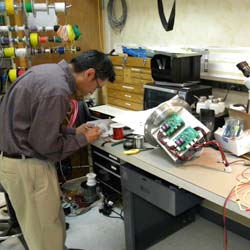
NASC has a well-equipped machine shop for prototype fabrication including metalworking equipment, 3D printers and ultrasonic and laser welders. Additionally, we have the capability to fabricate custom electronic printed circuit boards.
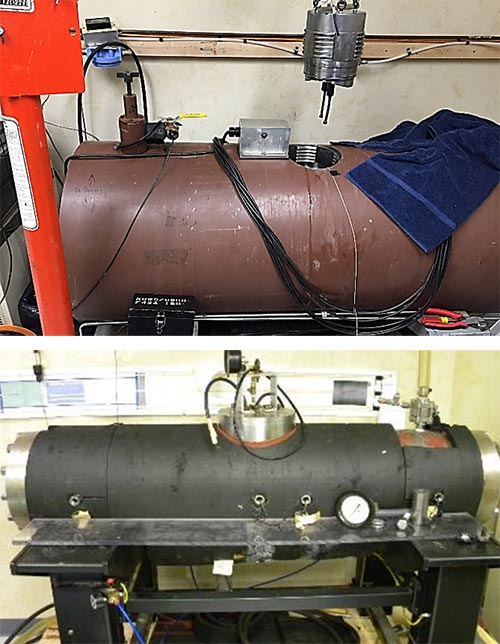
NASC can test acoustic sensors in a range of environmental conditions using our CBS Labs Mark III, the MRI 1602, and the SIMS Acoustic Calibrators.
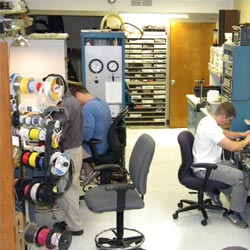
NASC has a full complement of digital design tools including MATLAB for signal processing analysis, FF2E and CABUOY for oceanographic system modeling, SOLIDWORKS and PROENGINEER for hardware design, stress and vibration analysis. NASC also has the tools needed to test and verify the operation of your system.
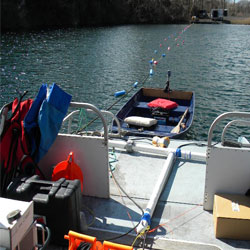
NASC has access to multiple flooded quarries in the local area where we can test oceanographic equipment in controlled conditions. We also have access to research vessels capable of conducting tests in open ocean conditions.
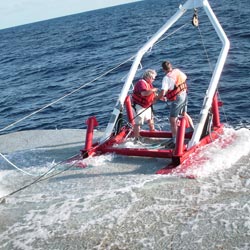
NASC has a well-equipped machine shop for prototype fabrication including metalworking equipment, 3D printers and ultrasonic and laser welders. Additionally, we have the capability to fabricate custom electronic printed circuit boards.

NASC AAS has the ability to test acoustic subassemblies under conditions of pressure and temperature using our CBS Labs Mark III, the MRI 1602, and the SIMS Acoustic Calibrators.
The CBS Labs Mark II Gradient Hydrophone Calibrator is designed for accurate and reliable measurement of sensitivity and frequency response, phase shift, and velocity-related polar patterns of gradient hydrophones in the frequency range of 3 to 400 Hz. A water-filled steel cylinder with stiff end plates is suspended in a pendulum fashion from a supporting frame. Three symmetrically placed 5-inch ports in the upper surface of the tank admit the hydrophones to be measured, which are suspended from a gantry located atop the frame. The tank is vibrated in the longitudinal direction by means of two moving-coil drivers. Fluid in the tank moves in phase with the cylinder, producing a standing wave that is eminently suited for calibrating gradient hydrophones.
The MRI 1602 Acoustic Calibrator provides a precise means of measuring hydrophone performance from 5 to 2500 Hz under hydrostatic pressures up to 10,000 psi. The system consists of a cylindrical pressure chamber mounted on a horizontal axis, with the ends terminated by active transducers. A set of electronics is utilized to generate electrical drive signals for each projector appropriate for the generation of acoustic waves along the axis of the chamber. Three signal modes may be selected: Plane Wave mode, where a plane progressive wave is generated with uniform amplitude and progressive phase along the axis of the tube; Pressure Mode, where a standing wave is generated with uniform pressure and zero local particle velocity at the center of the tube; and Gradient Mode, where a standing wave is generated with uniform particle velocity and zero local pressure at the center of the tube.
The SIMS Acoustic Calibrator performs measurements of hydrophone sensitivity and phase response over the frequency range of 5 to 2500 Hz. The temperature may be varied from 2 to 40 degrees C⁰ under pressures from 50 to 1000 psi for a simulated ocean depth up to 2200 feet.
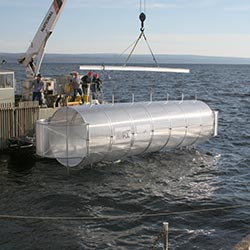
NASC was chosen to provide lead oversight for this sonobuoy development with the manufacturer. NASC designed and constructed a 36-foot modular, light-weight acoustic target to support Multi-static Active Coherent (MAC) testing of the SSQ-125 Sonobuoy.
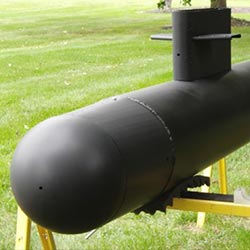
Constructed for CASPARS training as an acoustic target, the AAS scale model submarine is 12.5 feet in length with a diameter of 13 inches at the main cylinder. Designed and fabricated by NASC AAS personnel with powder coated steel and an air-filled main body, the submarine weighs 300 pounds and features a removable nose, tail, and conning tower.
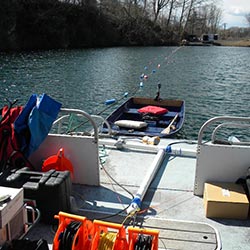
Originally used by the Naval Air Development Center, NASC re-established the Open Water Facility at the Oreland Quarry in 2007. The 900-ft x 300-ft flooded quarry is located only 30 minutes from the NASC Office. The Open Water Facility provides NASC with the ability to test mechanical and acoustic hardware in simulated ocean conditions utilizing a stable test platform with self-contained power supply. Additional Open Water Facilities include the NUWC Seneca Lake Test Facility, the San Clemente Production Test Facility, and the Key West Test Facility.


